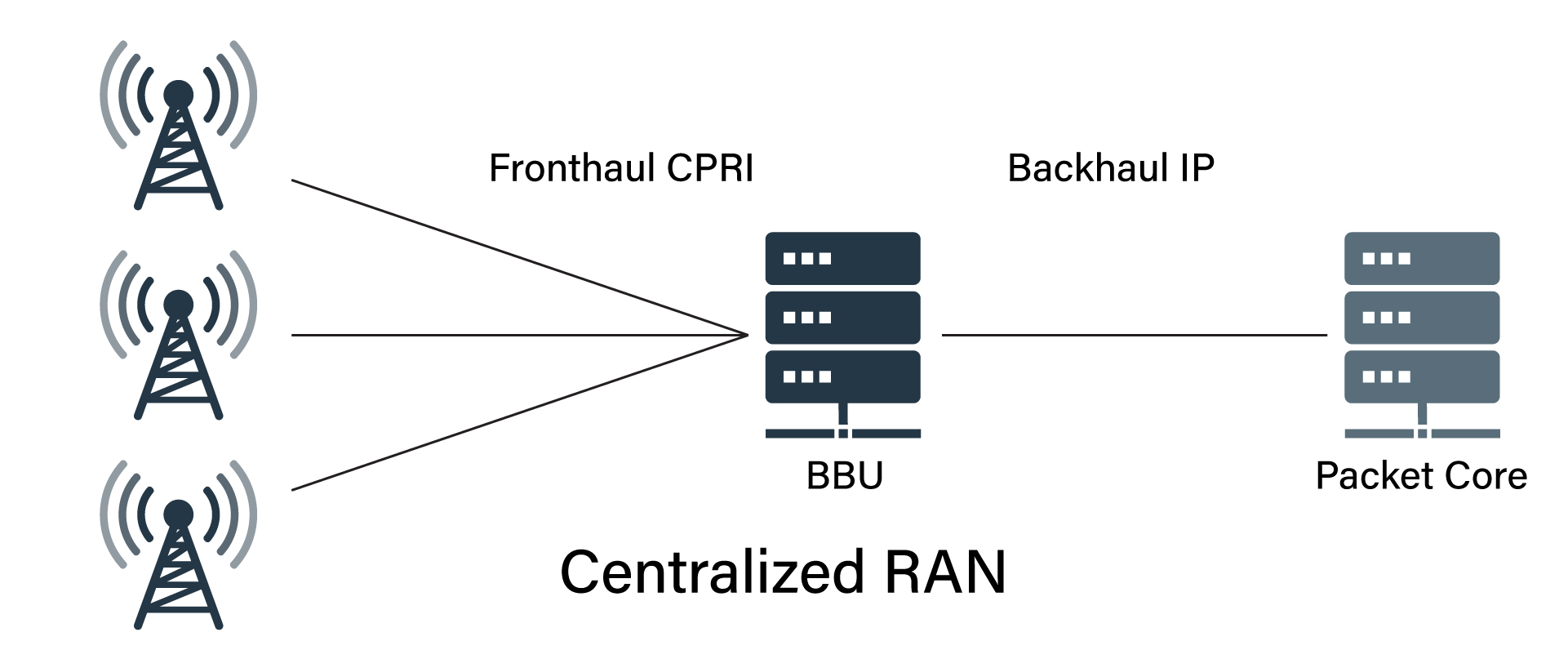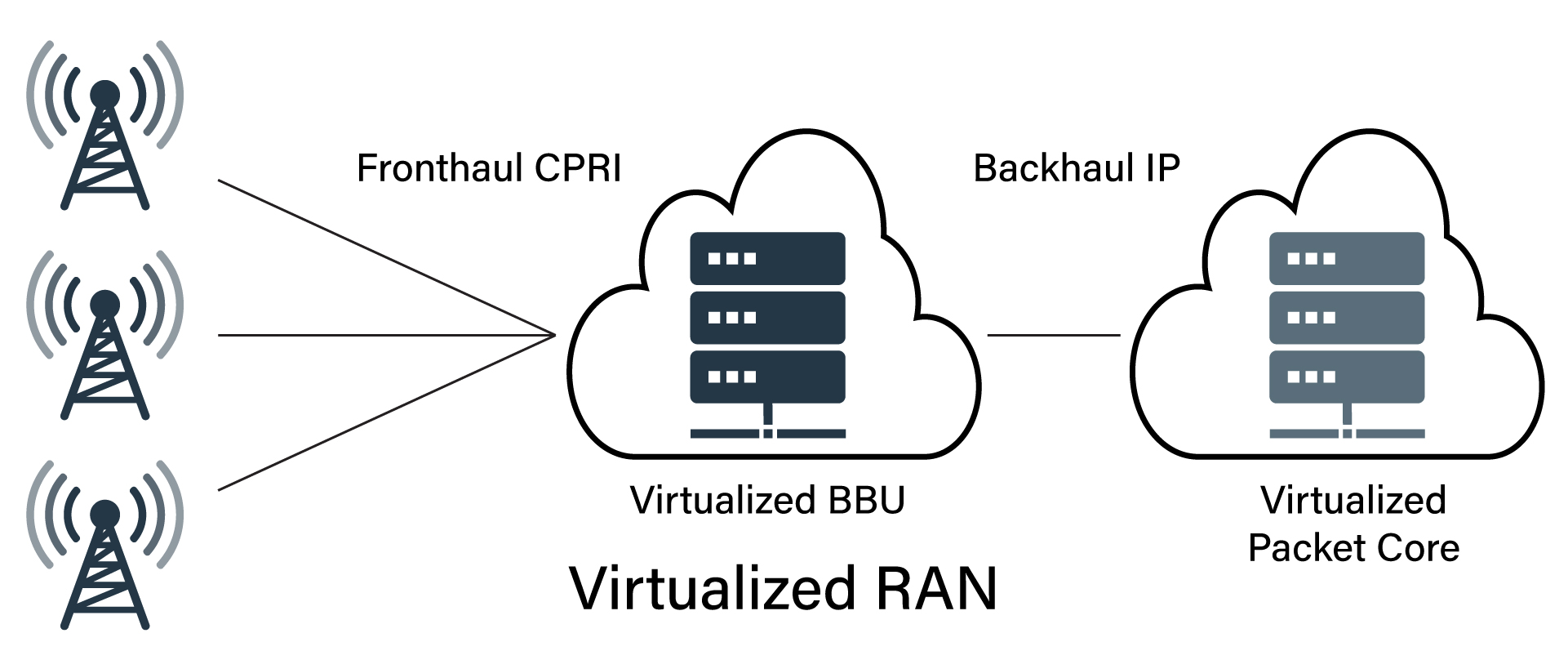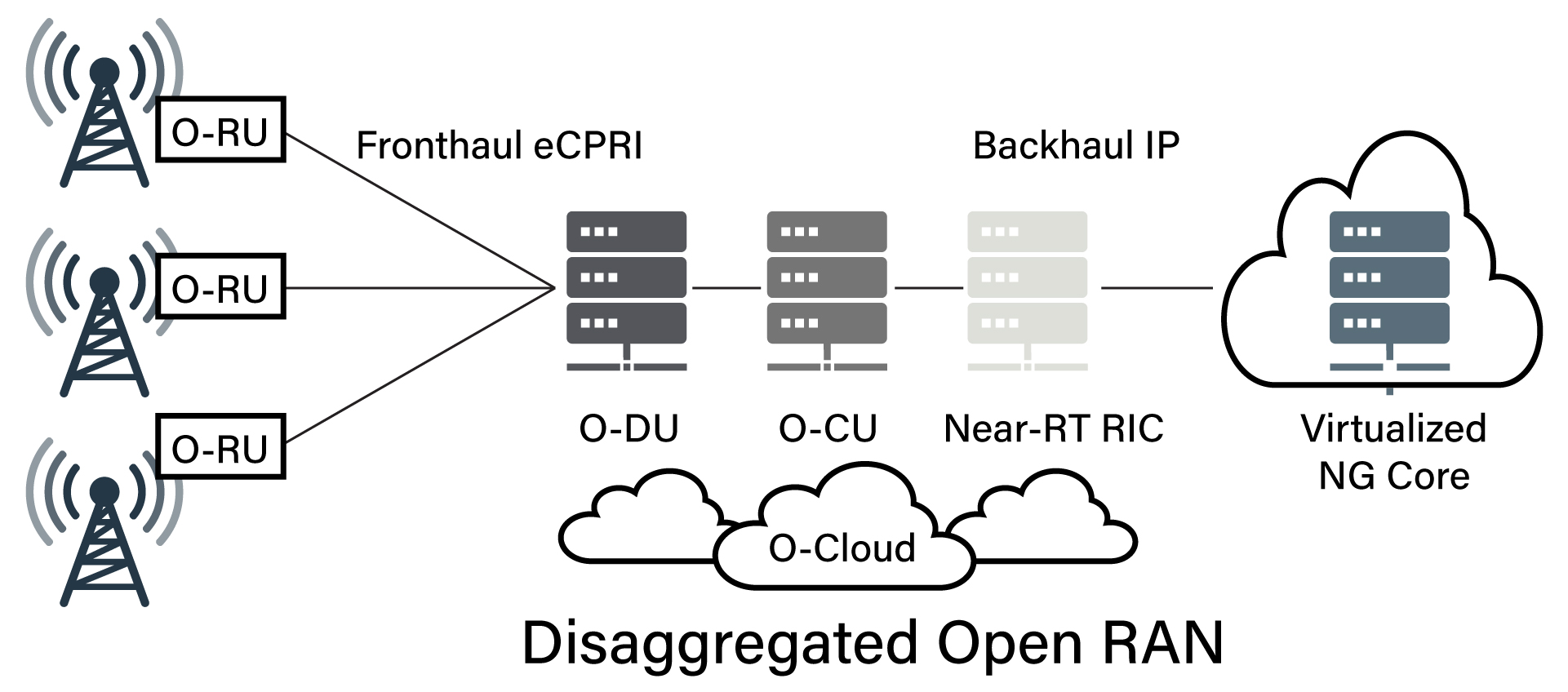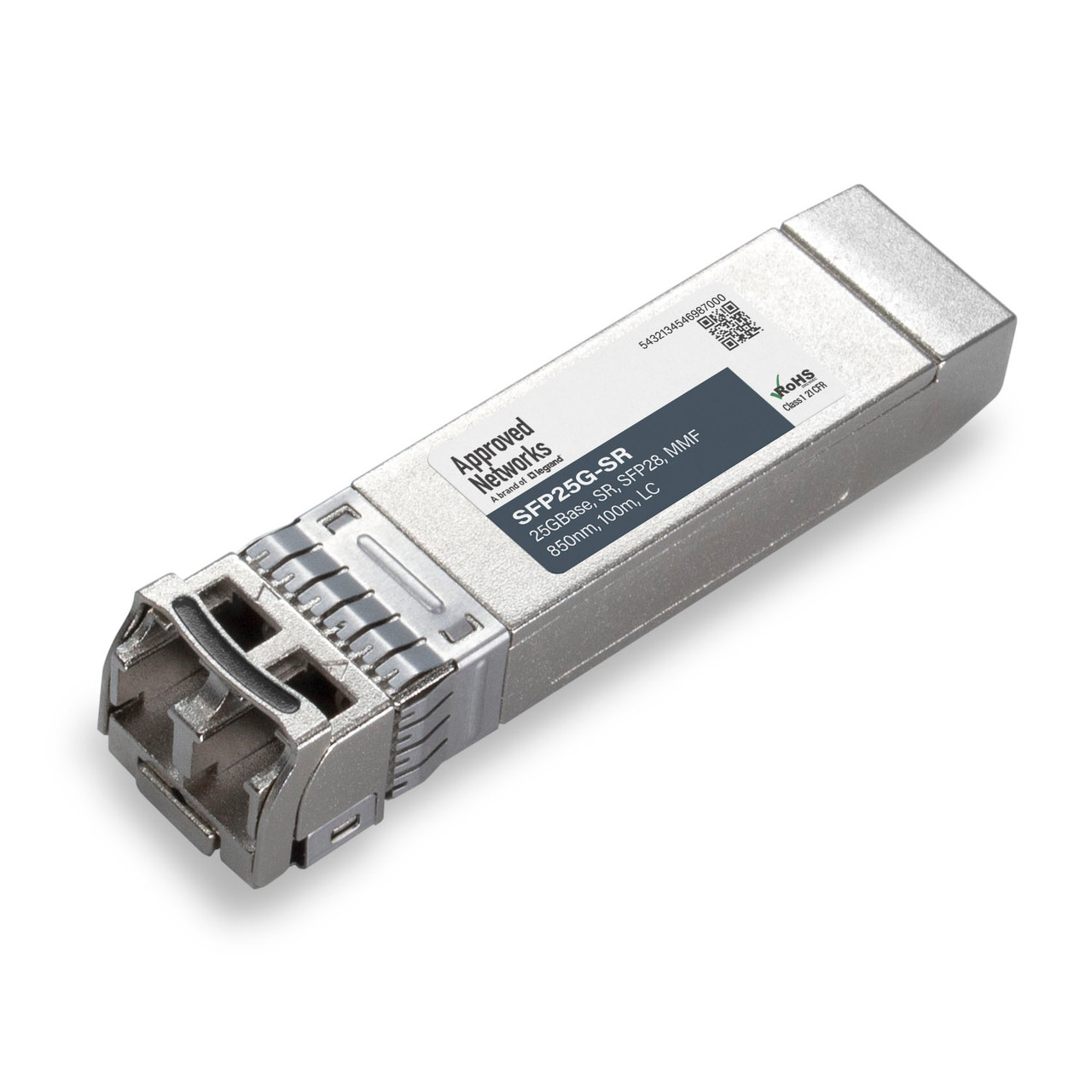How To Build Your 5G RAN Fronthaul
Posted by Frank Yang on Sep 16, 2022

At the Wireless Infrastructure Association’s Connect (X) 2022 conference in Denver earlier this year, 5G, RAN and Edge continued to be the popular topics. However, good practices of selecting optical transceivers as the important part of 5G Radio Access Networks (RAN) connectivity were not discussed nearly enough.
The wireless RAN has been evolving from the legacy architecture to C-RAN, V-RAN and O-RAN (Figure 2.1). Note the fronthaul in all three architectures:

Figure 2.1: The evolving wireless RAN architecture C-RAN
Note: RRH is Remote Radio Head. BBU is BaseBand Unit. CPRI is Common Public Radio Interface. IP is Internet Protocol.

Figure 2.2: The evolving wireless RAN architecture V-RAN

Figure 2.3: The evolving wireless RAN architecture O-RAN
Note: O-RAN is Open Radio Access Network. O-RU is O-RAN Radio Unit. O-DU is O-RAN Distributed Unit. O-CU is O-RAN Central Unit. O-Cloud is Open Cloud. Near-RT RIC is Near Real-Time RAN Intelligent Controller. NG-Core is Next Generation Core network.
The CPRI Specification V7.0 defines the following CPRI options. The basic Universal Mobile Telecommunications System (UMTS) chip rate is 3.84Mchips/s (million chips/sec). A basic frame (chip) consists of 16 words. The word length T (in bits) depends on the CPRI line bit rate as shown below in Figure 3. For example, each word of the CPRI 10 has 384 bits (8 bytes). 491.52 is obtained by 8 bits/(byte.word) multiplying 16 words/chip and 3.84Mchips/s.

Selecting an appropriate optical transceiver to support CPRI/eCPRI for the fronthaul can be as simple as following three steps:
Step 1 – Select the Data Rate
Typically, 10G optics support CPRI 7 and 8. CPRI 10 will require 25G transceivers. There are optical transceivers supporting dual rates of 10G and 25G. The 10/25G dual rate optic provides the flexibility of deploying CPRI 7 or 8 today and upgrading to CPRI 10 in the feature.
Step 2 – Select the Distance and Fiber Type
The wireless cell design will determine the fronthaul distance. Given the nature of small cell densification, 25GBASE-SR extended reach (up to 150m/200m over OM3/OM4 multi-mode fiber) or 25GBASE-LR (up to 10km over single-mode fiber OS2) transceivers can be good candidates for consideration. And more choices are available.
BiDi – bi-directional over single-fiber strand – can be a good candidate for RAN designs, and is valuable in many use cases. Note that when using BiDi, we must use a pair for both the near and far ends. For example, use a 25G LR BiDi optic with 1270nm wavelength for transmitting, and a 1330nm wavelength for receiving at the near end. For a 25G LR BiDi optic with 1330nm wavelength for transmitting, use a 1270nm wavelength for receiving at the far end to ensure the polarity.
Step 3 - Select the Temperature Range
By default, optical transceivers are in the commercial temperature range of 0 to 700C. Given the fronthaul use case, it’s a good practice to select industrial temperature-rated transceivers: -40 to +850C. Notice that when selecting the industrial temperature (I-temp) range, the equipment hosting the I-temp optics must be I-temp rated also, otherwise it’s meaningless.
Look for a future article on how to use 10G or 25G Dense Wavelength Division Multiplexing (DWDM) optics as another way to conserve fiber to the cell site.



